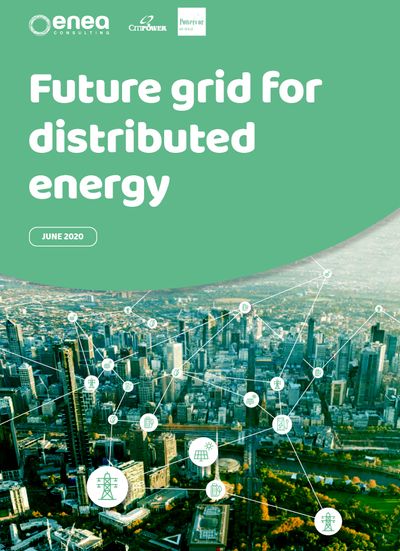Future grid for distributed energy

Blunomy (Enea Consulting) was commissioned by CitiPower and Powercor to examine the issues faced by Australian distribution networks in maintaining security and quality of supply in the context of increasing distributed energy resources (DER). The study assessed the techno-economic performance of potential solutions. The study also made recommendations to enable increased DER on distribution networks.
This report was led by Victorian distribution company CitiPower and Powercor in collaboration with ENEA Consulting. The report was part of a project supported by the Australian Renewable Energy Agency (ARENA).
Future grid for distributed energy report shows how residential solar can be better integrated into electricity networks
Blunomy (Enea Consulting)’s Future grid for distributed energy report shows that a suite of technologies is required to address power quality issues caused by increasing electricity generation from rooftop solar photovoltaic (PV) systems.
This report is a timely addition to drive solutions for Australia’s energy transition as consumers’ appetite for rooftop PV continues to grow. Recent modelling by the Australian Energy Market Operator shows that distributed energy resources (DER), such as rooftop PV and residential batteries, could provide 13% to 22% of annual electricity consumption in the National Electricity Market by 2040.
Key recommendations to enable increased DER on distribution networks are below. The report also recommended further topics for study to complement the findings, which are listed in the report.
Allow for flexible export limits of PV generation
Governments should consider allowing for flexible export limits (also referred to as dynamic curtailment) in scenarios where it is appropriate. Enabling customers to only be curtailed when the grid requires can result in more efficient outcomes.
Promote and install smart meters in jurisdictions that expect PV growth
Governments in jurisdictions with expected growth in residential solar are encouraged to follow the example of the state of Victoria, by mandating the installation of smart inverters. Distribution companies should include smart inverts as part of their connection agreements with customers installations.
Consider other mitigation measures to complement smart inverters
Distribution companies should expect to deploy a range of mitigation measures in conjunction with smart inverters to avoid significant curtailment at high PV penetration levels. The optimal solution will differ depending on the local network context.
Build power flow models for a wide range of low voltage networks
Distribution companies are encouraged to invest in building a wide range of power flow models. The creation of an expanded set of power flow models that better represents the diversity of low voltage networks would allow more accurate extrapolation to the entire distribution network.
Explore the potential of a fleet of behind-the-meter batteries
This study showed that batteries will not contribute to enabling further PV uptake without coordinated management. The grid-servicing potential of a fleet of behind-the-meter batteries could be investigated by distribution companies and governments.